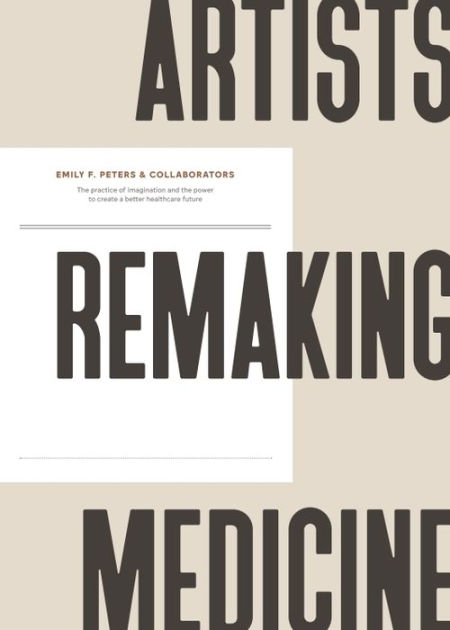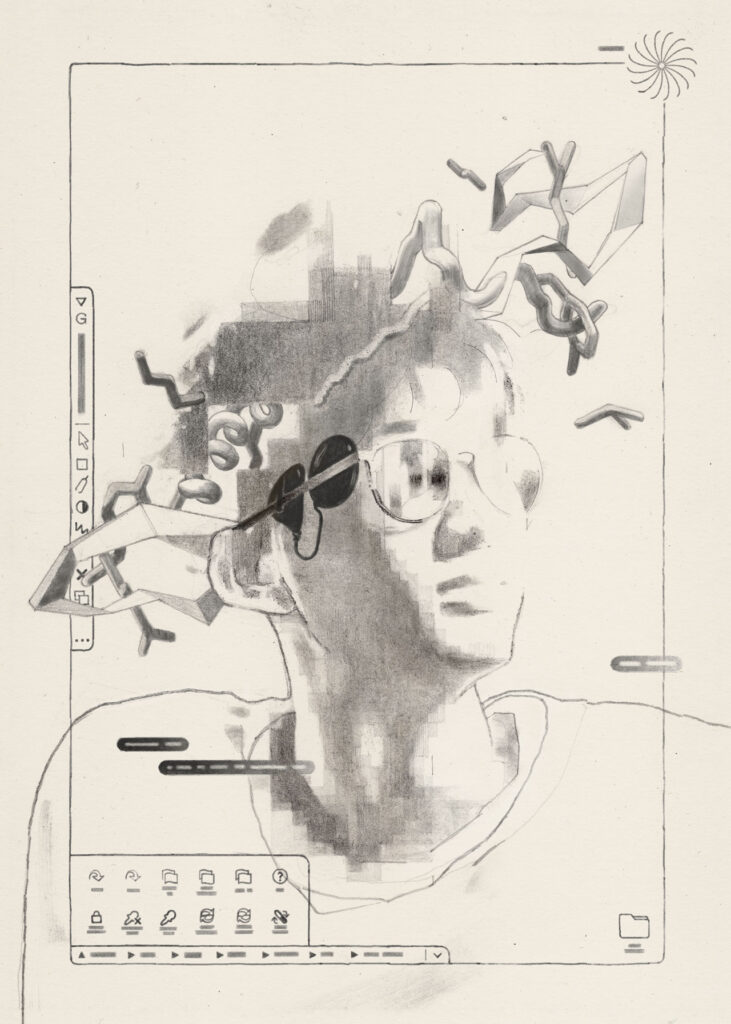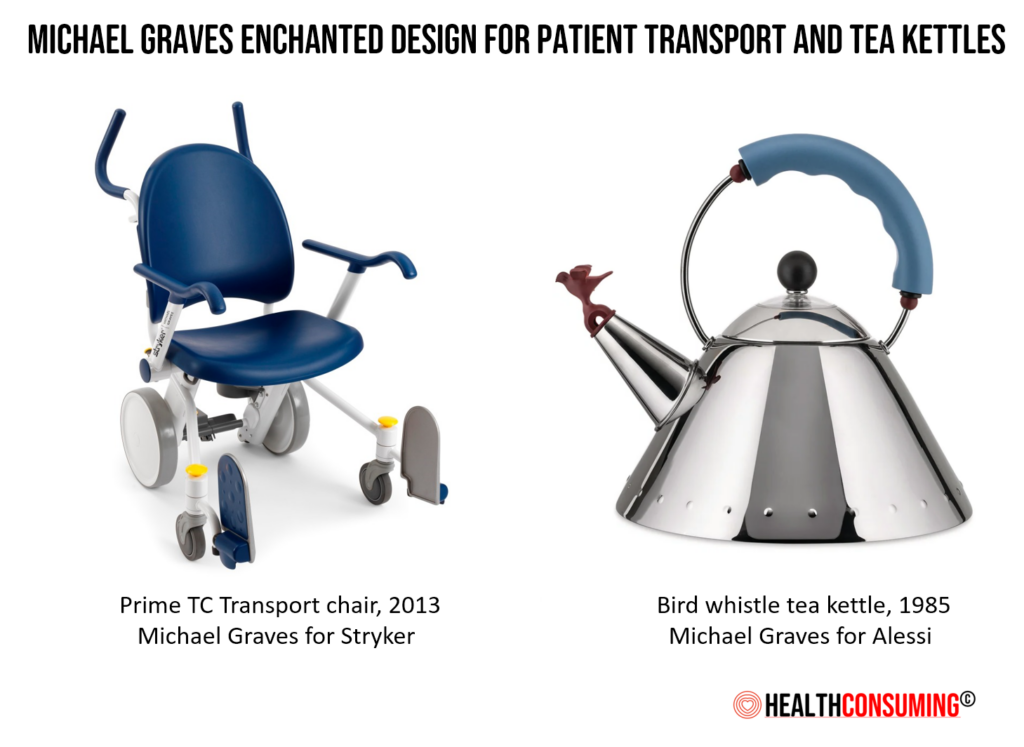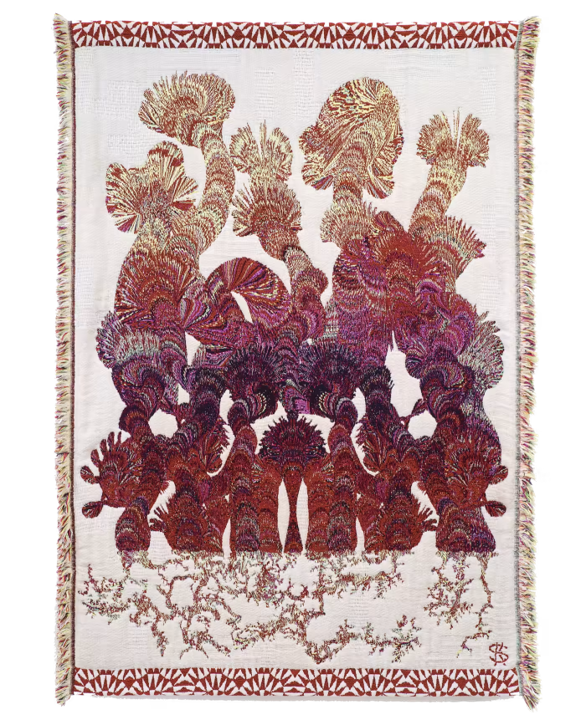What if we asked an artist to re-imagine what health care could be? How might Van Gogh redesign a patient room akin to his room at Arles, or Michelangelo re-think general surgery? How might Thoreau take us on a nature walk for our mental health, or Basquiat channel his inner Da Vinci for a version of Jean-Michel’s Anatomy?
In her new book, Artists Remaking Medicine. Emily Peters confronts health care’s paralyzing complexity (her words in the introduction) to invite a community of artists and artful thinkers to share their visions for remaking health care. 
With the subtitle, “The practice of imagination and the power to create a better healthcare future,” Emily curated stories with and from 25 collaborators
Emily knows all about applying imagination to create better health care brands and products, as Founder and CEO of Uncommon Bold, an agency that supports organizations in inspiring engagement and enchantment in health care.
“What we’re lacking from a little bit is the idea of what is possible,” Stella Safo, MD, MPH, explained to Emily in an interview comprising the chapter, “On What Is Possible.” In her work at Mount Sinai Health System in New York City, Dr. Safo collaborates with a multidisciplinary team of data analysts, designers, and engineers, in concert with doctors and nurses.
She asks: “Why isn’t there an artist on a practice transformation and improvement team?”
In framing the contributors’ artful thoughts and deeds, the book is organized into sections considering Time, Body, Sight, Space, Sound, Color, Dreams, and Action.

A key questions posed in Time from the start of the book is that art and medicine were once part of everyday life: so can we reclaim medicine for the commons? That is for EveryOne?
One response to this challenge comes from Dr. Rana Awdish: she explained, “Until my own experience as a patient, I didn’t allow myself to envision an alternative where I was unguarded, reception and freely giving of myself.”
She then confesses, “I didn’t understand that open channels would replenish my supply of self. That there was reciprocity in empathy.”
From empathy, we can move to community: we learn from The Chroma Project about the opportunity for color to transform health care experiences into a shared sense of community. And those colors have a history, or pathology, in having been chosen in the past, morphing into tonal icons — taking the forms of pill bottles, the Swiss flag red cross, Band-Aid beige, Viagra blue, and surgical mask teal (made all too ubiquitously known to us during the COVID-19 pandemic).
Several of my favorite graphics in the beautifully-illustrated book come from artist James Lee Chiahan, who composed the image of the person above titled “Looking Ahead.”
As she looks ahead in the epilogue of the book, Emily asks, “What happens when we help art and medicine be together again?”
“It could bring us together to heal,” she asserts — where “us” includes all stakeholders in health/care, clinicians and patients and researchers and administrators and innovators — and indeed, all the artists and artful thinkers we can embed in the transformation.
This is the work of remaking medicine — can we imagine it? Emily and her collaborators ask and answer that question.
Indeed, we can. And we must.

Health Populi’s Hot Points: A personal favorite designer-turned-durable medical equipment designer is Michael Graves, whose firm has continued his vision for helping people manage aging and living with enchantingly-designed assistive technology. You can read more this program here in Health Populi. Although we lost the amazing Michael in 2015, his creative ethos and mission continue to flow through colleagues still carrying on the important work through Michael Graves Architecture & Design Co. in Princeton.
More artists and designers are translating their personal health experiences to their work and art. I added a new name to my ever-growing lists of artists-channeling-health/care this weekend, learning about how chronic migraine headaches have inspired a Finnish-born artist to weave a psychedelia aesthetic into his textiles. His story and review of a new exhibition of his work was featured in this weekend’s Financial Times House & Home section.
Kustaa Saksi is a textile artist based in the Netherlands who has been dealing with migraines for many years — which he describes as “an unexpected visit from an irritating old friend.”
His current exhibit in the Design Museum in Helsinki is called In the Borderlands, where Saksi has embedded his migraine visions into weavings the FT writer Helen Barrett describes as “disorientating moments between reality and illusion into hyperreal, almost psychedelic jacquard tapestries.”
In the artist’s words, “Migraines make me feel horrible. But they also give me something unique, a visual side….It helped to dig deep into attacks and try to understand them,” he told FT writer Helen Barrett, who has also dealt with migraines since childhood.
Helen adds to Saksi’s story introducing us to Dr. John Quin, a retired physician and endocrinologist in the UK who also suffers with migraines. He is quoted in the FT article saying that works like Saksi’s textiles can be, “profoundly reassuring” for people in pain.
The growing interest in arts and artful thinking on health care extends to philanthropy, and there is no better example of someone bridging arts and the community than Alice Walton, whose father was Sam Walton, founder of Walmart. In this video, Alice explains the role of art and medicine to extend access to under-served communities. I have had the joy of visiting the Crystal Bridges Art Museum in Bentonville, Arkansas, which has greatly benefited from her contributions and leadership. Here’s a great model of someone with artful thinking and doing, remaking medicine.




 I am so grateful to Tom Lawry for asking me to pen the foreword for his book, Health Care Nation,
I am so grateful to Tom Lawry for asking me to pen the foreword for his book, Health Care Nation,  I love sharing perspectives on what's shaping the future of health care, and appreciate the opportunity to be collaborating once again with Duke Corporate Education and a global client on 6th May. We'll be addressing some key pillars to consider in scenario planning such as growing consumerism in health care, technology (from AI to telehealth), climate change, and trust -- the key enabler for health engagement or dis-engagement and mis-information. I'm grateful to be affiliated with the corporate education provider
I love sharing perspectives on what's shaping the future of health care, and appreciate the opportunity to be collaborating once again with Duke Corporate Education and a global client on 6th May. We'll be addressing some key pillars to consider in scenario planning such as growing consumerism in health care, technology (from AI to telehealth), climate change, and trust -- the key enabler for health engagement or dis-engagement and mis-information. I'm grateful to be affiliated with the corporate education provider  Thank you FeedSpot for
Thank you FeedSpot for